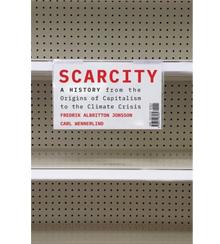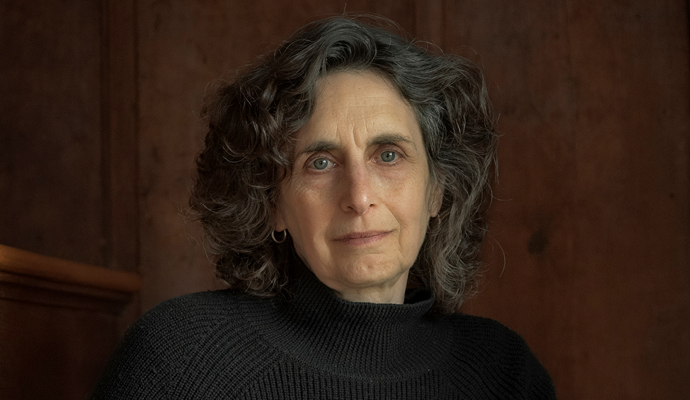A tale of two ways to think about climate change
A sweeping philosophical history reveals two groups at odds on the relationship between nature and the economy.

Scarcity: A History from the Origins of Capitalism to the Climate Crisis
by Fredrik Albritton Jonsson and Carl Wennerlind, Harvard University Press, 2023
The premise behind Scarcity, a new book by two historians at US universities, is extremely accessible. It promises to take a mind-bogglingly complicated concept—the relationship between economic growth and the environment—and put it into a frame that makes it much easier to understand. The approach works well, but also raises further questions that its authors are reluctant to answer.
Fredrik Albritton Jonsson and Carl Wennerlind, professors at the University of Chicago and Barnard College, Columbia University, respectively, argue that for at least 600 years, intellectuals have debated the “ideal relationship between nature and the economy.” Although the material circumstances of these philosophers, economists, and poets have changed beyond all recognition over this period, Jonsson and Wennerlind believe they can be divided neatly into two camps. There are the “cornucopians,” who are convinced of the powers of human ingenuity to extend nature’s bounty to satisfy all of our desires, and the “finitarians,” who see the planet’s resources and humankind’s power over them as limited, which means we must learn to compromise in order to thrive.
In 16th-century England, where Jonsson and Wennerlind pick up their story, the finitarians are firmly in the ascendant. “The satisfaction of basic needs required a constant struggle with the material world. Hard work and prayers to God and the saints were seen as the only pathways to comfort and sufficiency.” This was a period of subsistence farming; little surplus output meant meager opportunities for economic growth. Advances in technology were incremental, but outbreaks of bad weather and disease were frequent, so it seemed clear that people were subject to nature, rather than the other way around.
The development of a merchant class in Europe, which used money not only as a medium of exchange but as a means to draw a profit, changed all this. London, the authors note, quadrupled in size between 1550 and 1600, attracting artisans and craftsmen who were determined to set science and the scientific method free to “chart its own independent, utilitarian course.” From this point on, the cornucopians assumed the dominant position that they have yet to surrender. Indeed, Jonsson and Wennerlind’s narrative then assumes a pattern: progress happens, finitarians warn of an imminent disaster, and society finds a way to overcome it, buttressing mainstream faith in cornucopian thought.
There is no better example of finitarian failure than Thomas Malthus, who warned at the very end of the 18th century that a rapidly expanding population would result in mass starvation unless birth rates were brought down. His name has subsequently become synonymous with misplaced doomsaying. Here, Jonsson and Wennerlind put his work in the correct historical context, noting that he wrote “at a moment when Great Britain appeared more isolated and vulnerable than it had been for centuries,” because of a conflict with France that curtailed access to grain imports. Nevertheless, Malthus was both comprehensively wrong, and worse, stubborn about it, “like a soldier who relives the battles of the past long after the war had ended.” The Industrial Revolution and the subsequent fossil-fuel economy enabled efficiency gains far beyond what Malthus and his contemporaries could grasp.
Indeed, the past two centuries have piled on more and more evidence of humankind’s mastery over land, sea, and space. No matter how quickly the global population has grown, our collective ability to feed and provide for ourselves has outpaced it, but has not accounted for all—hundreds of millions still live below the poverty line. When Malthus was writing, the global population stood at around 1 billion. It took another 130 years for the world’s population to double, to 2 billion. But the next doubling, to 4 billion, took less than 50 years. In this period of abundance, neoclassical economics became utterly dominant. Neoclassicists believe that “the point was to maximize consumption by making use of available resources—there was no need to hold back, either on ethical or preservationist grounds—so that the welfare of consumers could be optimized. Nature entered the neoclassical models only to the extent that it imposed costs on the production of goods.”
There is, of course, a twist in the tale. For two-thirds of Scarcity, Jonsson and Wennerlind describe the repeated victories of the cornucopians over the finitarians, with the latter often relegated to shouting warnings from the margins. But late on in the book, the authors reveal that they themselves are finitarians and ask us to believe that, this time, their doomsaying really is correct. They argue that our newly acquired knowledge of environmental degradation, the delicate balance of the natural world, and the process of climate change demonstrate that cornucopianism “has relied all along on a radically incomplete understanding of the natural world.” Our taming of nature, the exponential growth in our population, and the dramatic improvement in our living standards have all been built on unsustainable foundations. This time, they announce, it’s unlikely we can innovate our way through.
Our taming of nature, the exponential growth in our population, and the dramatic improvement in our living standards have all been built on unsustainable foundations.
The question of whether Jonsson and Wennerlind are right is far outside the scope of the book. But their sudden pivot in the concluding section helps to highlight some of the areas that Scarcity skates over. It would have been interesting to hear what contemporary finitarians make of the fact that populations are shrinking in 20 countries in Europe and East Asia and will do so imminently in China. Theirs is also a narrow survey: their intellectuals are English, Scottish, and occasionally French. (Some Americans pop up when neoclassical economics takes root.) There is no denying that Western Europe has been the crucible of much of economic theory, but it feels like a major omission that the fastest industrialisation in history—that of China since the late 1970s—is omitted entirely. The discovery of the depletion of the ozone layer is referenced as a milestone in our understanding of our impact on the planet, but our success in repairing it is ignored.
To be fair to Jonsson and Wennerlind, their aim with Scarcity is a little different. They want to provide a historical context to the ongoing debate of what sort of economy we want at a time when the planet is struggling to cope with the exponential rise in human consumption. If we manage to find technological solutions to the interconnected problems of nature loss and climate change, the authors would be delighted. But if we can’t and we also fail to curb our current and future levels of consumption, we cannot say we were not warned.
Author profile:
- Mike Jakeman is a freelance journalist and has previously worked for PwC and the Economist Intelligence Unit.




